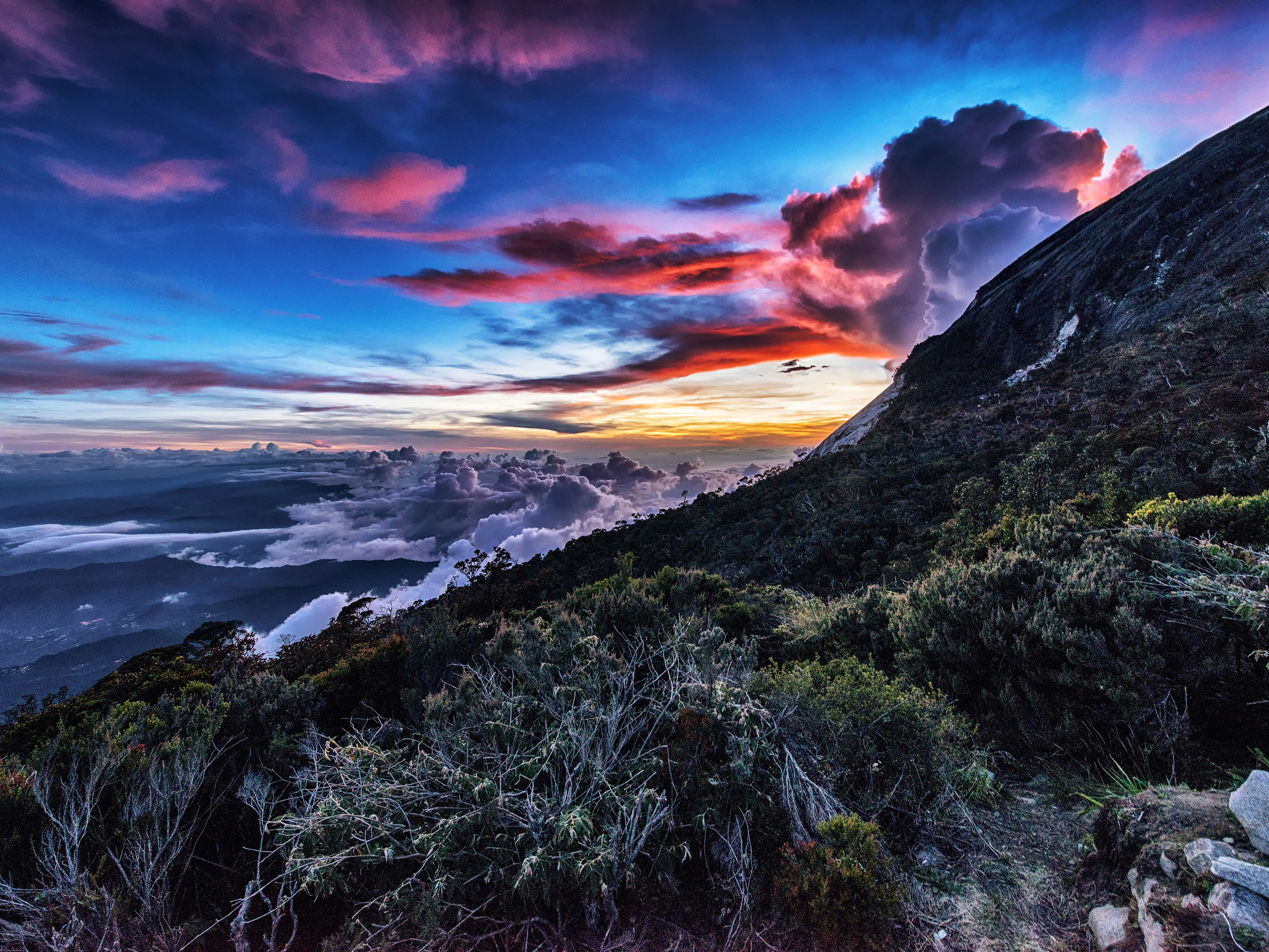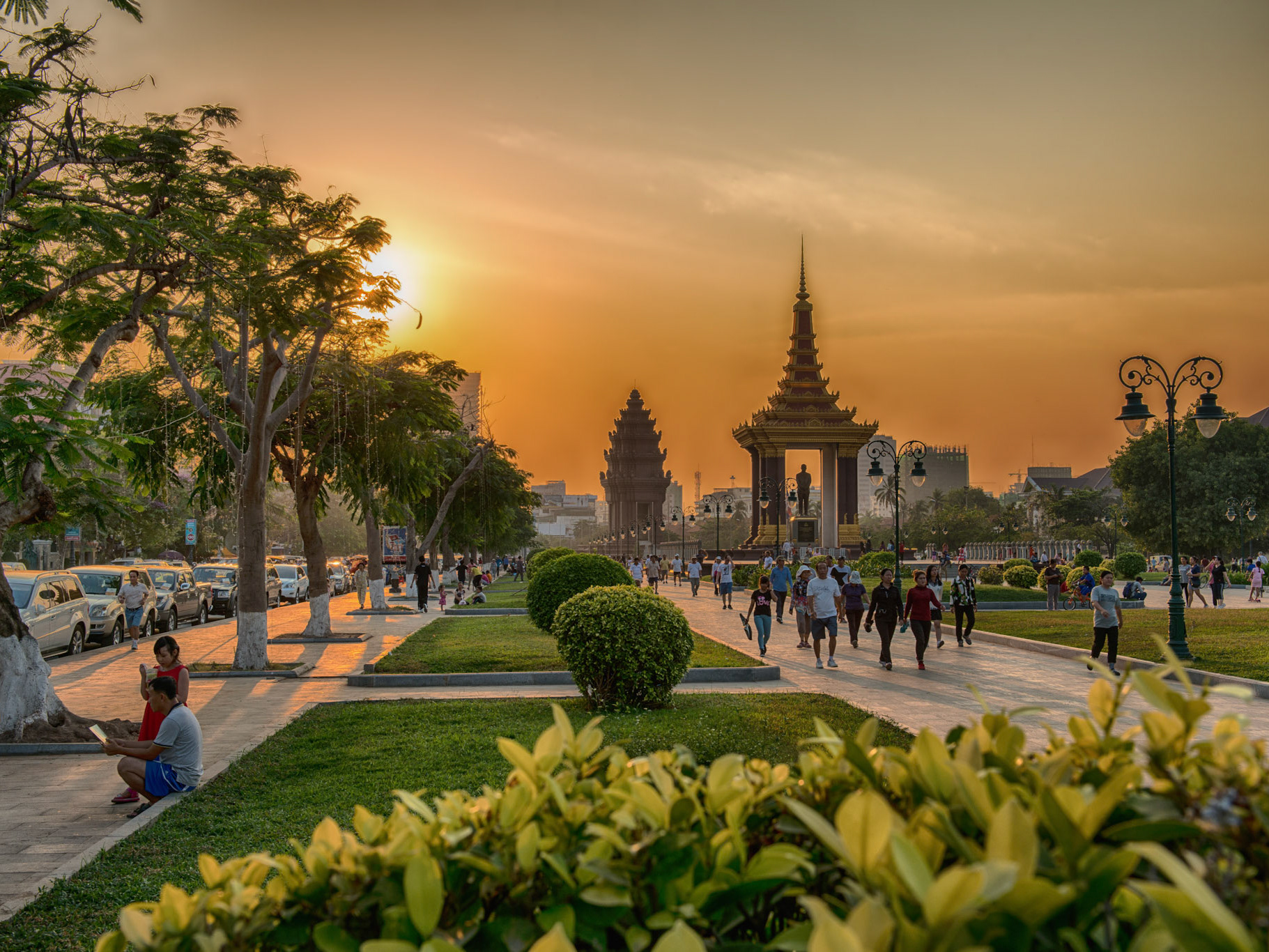위대한 김일성동지와 김정일 동지는 우리와 영원히 함께 계신다
The greatest Kim Il Sung and Kim Jong Il will be with us forever.
Portraits of a Dynasty
One of the first things a traveller to North Korea notices is a big portrait of Kim Il Sung as you drive out of Pyongyang International Airport. It's an image that soon becomes very familiar.
Millions of portraits, mosaics, paintings and monuments of Kim Il Sung (1912–1994), founder of North Korea, and his son Kim Jong Il (1941–2011), the father of current leader Kim Jong Un, offer daily reminders to the public of the central role of the Kim dynasty in their nation's story.

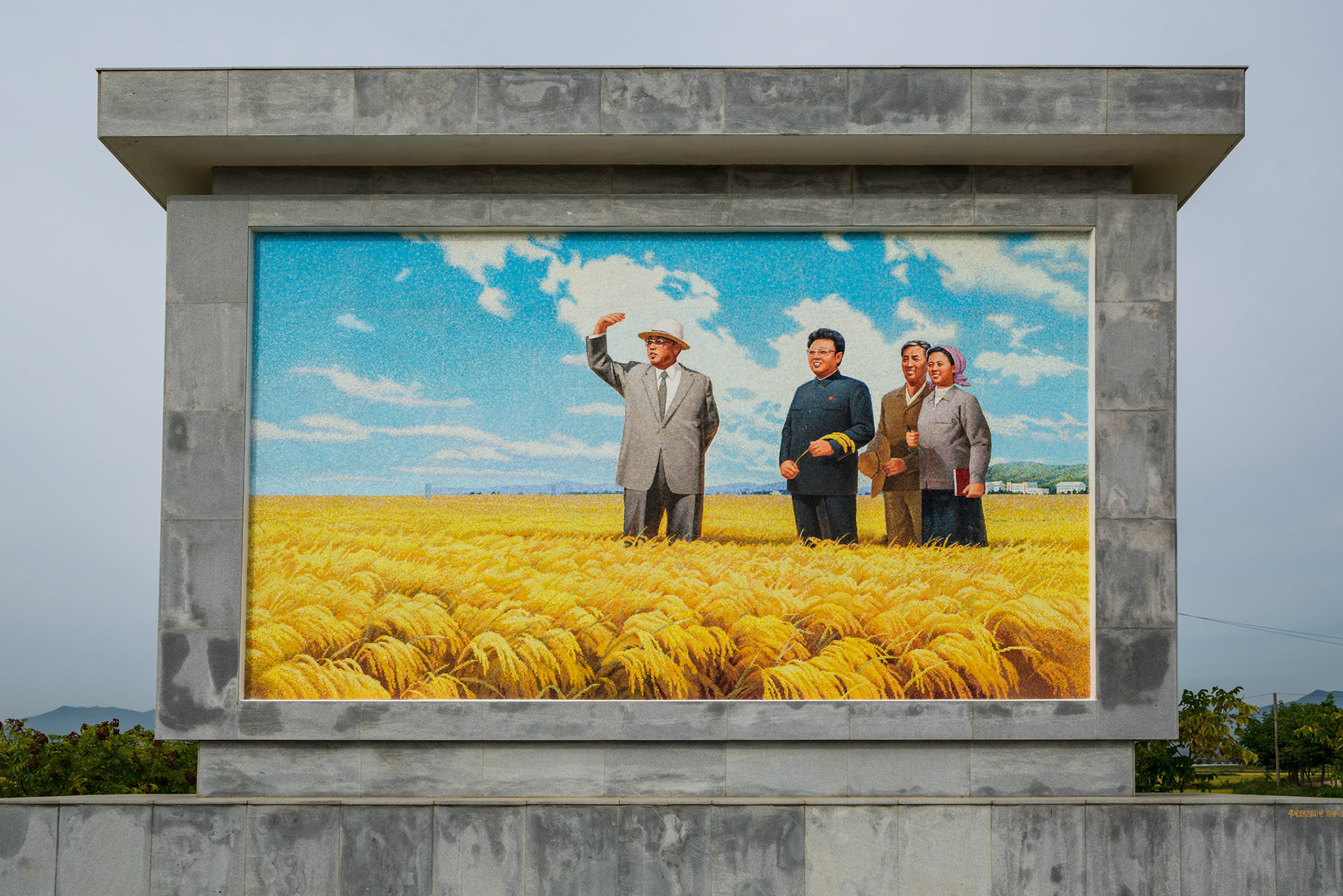
Images of Kim Il Sung and Kim Jong Il are everywhere you go. Portraits are mandatory not just in public places like museums, hospitals, schools and factories, but even in private spaces such as the living rooms of apartments. Additional there are many official slogans that appear on the government propaganda found in abundance across the country. Bright and colorful depictions of happy workers, fierce comrades and beautiful Korean landscapes can be seen radiating from every street, every bus stop and all public spaces throughout the nation.


혁명적인 총 공세, 모두다 올해 신년사 과업 관철에로, 일심단결, 자립성, 주체성, 과학기술
Drive for revolutionary attacks to achieve this year’s targets, let’s be united, self-sufficient, independent and focus on scientific technology.
Pyongyang
An ideological statement forged in concrete, bronze and marble, capital city Pyongyang is the ultimate metropolis, built almost entirely from scratch following its destruction in the Korean War. Every visit to North Korea focuses heavily and enthusiastically on the capital's monuments, towers, statues and buildings that glorify Kim Il Sung, Kim Jong Il and the Juche philosophy.
Arch of Reunification
Entering the city of Pyongyang, visitors pass through the Arch of Reunification. The two women holding a conjoined North and South Korea symbolize president Kim Il Sung's vision for the two countries.
At some point in the future this street shall connect Pyongyang and Seoul...
View to the city of Pyongyang from Juche Tower, divided by the the river Taedong. In the middle Kim Il-Sung Square and Grand People's Study House can be seen. Further back on the right side the Ryugyong Hotel rise in the sky, currently the tallest abandoned building in the world. On the left smoke drifts from Pyongchon Thermal Power Station, the central and only power plant in Pyongyang.

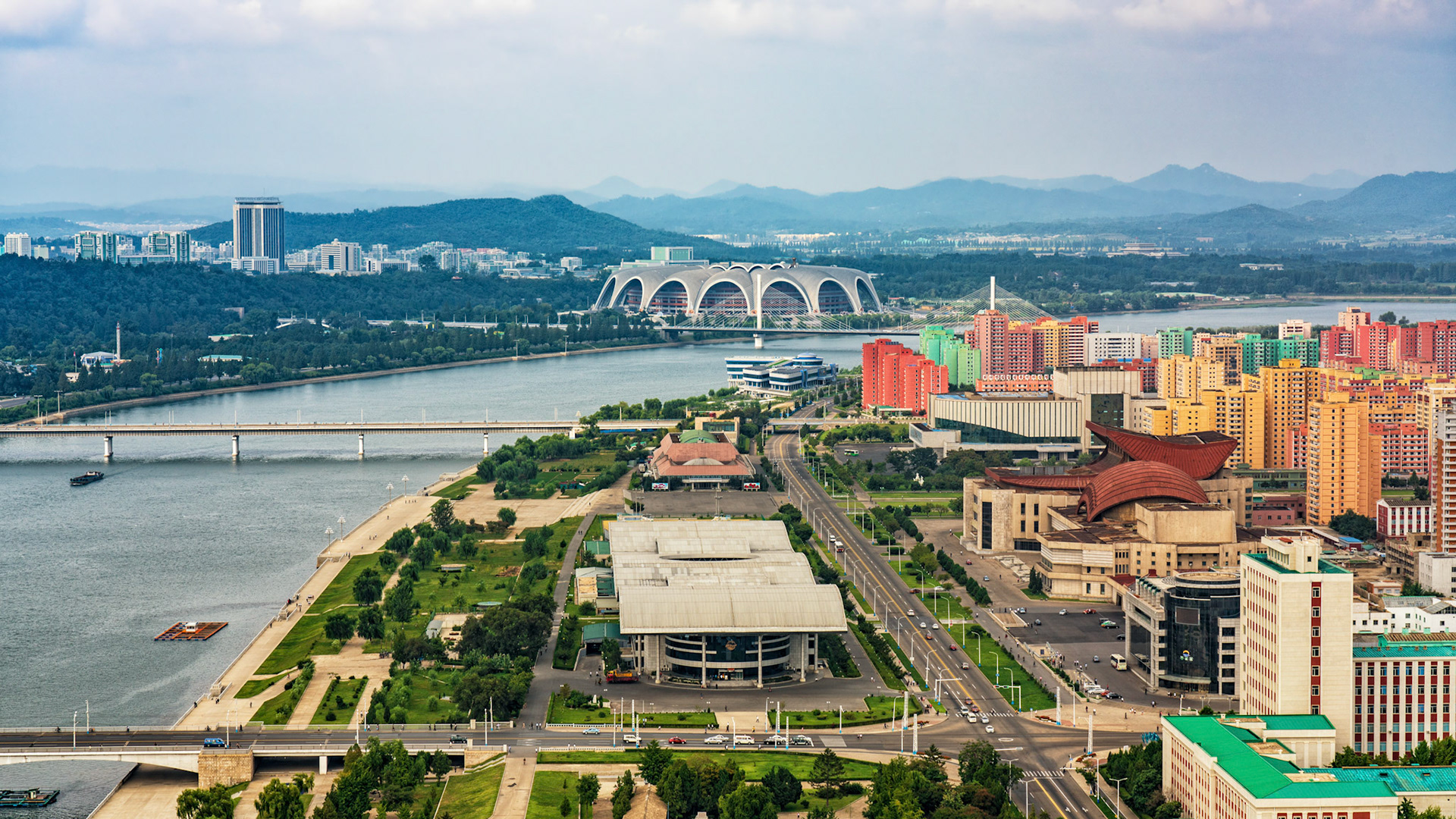


Kim Il-Sung Square — The Heart of Pyongyang
Kim Il-Sung Square is Pyongyang’s central square where North Korea’s massive military parades normally take place. Opened in August 1954, the square can accommodate a rally of more than 100,000 people. The square has a great cultural significance, as it is a common gathering place for rallies, dances and military parades and is often featured in media concerning the DPRK. The traditional Korean building behind Kim Il-Sung Square is the Grand People’s Study House, a lecture hall and library that preserves over 30 million books.

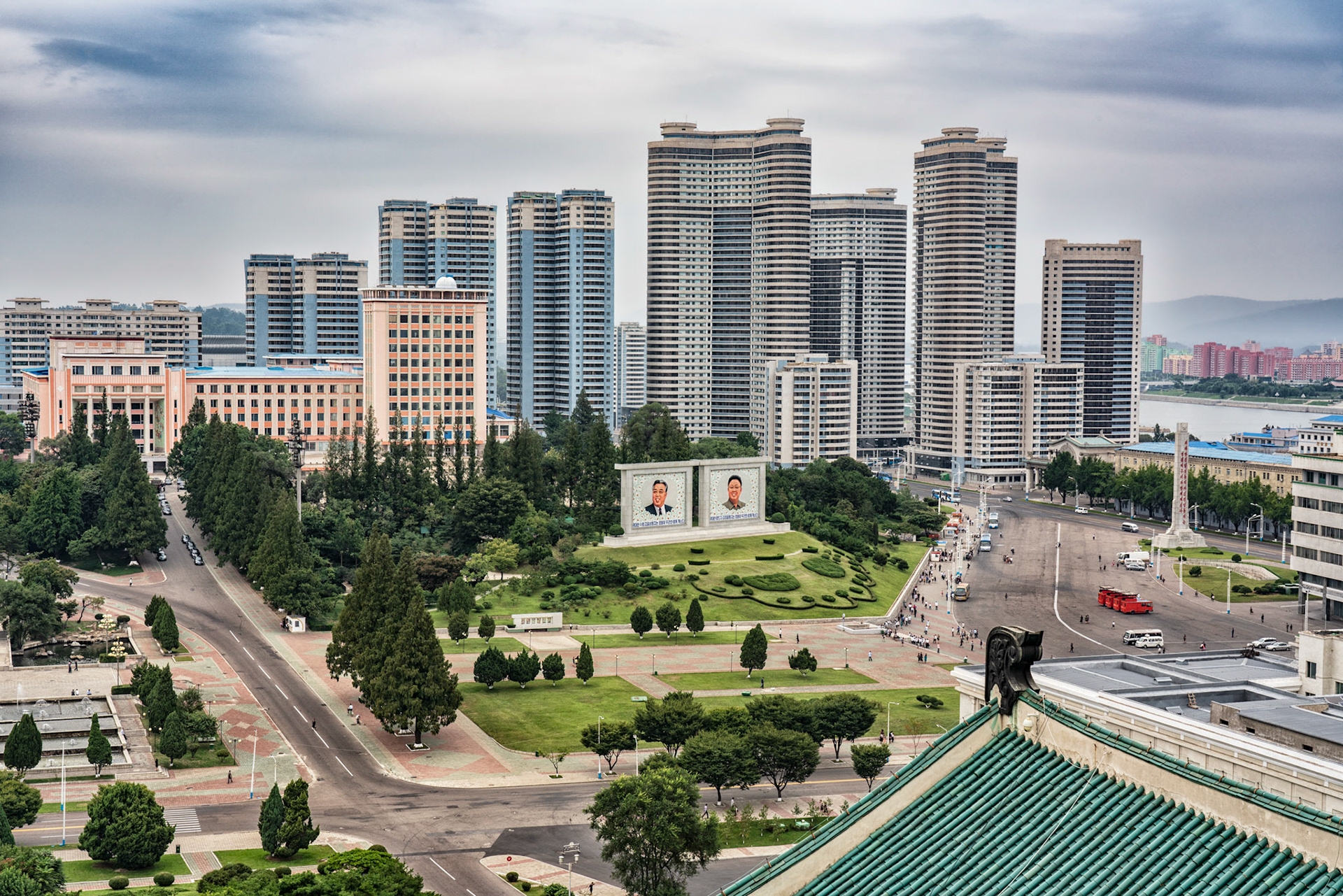
Tower of the Juche Idea
Juche Tower is North Korea’s tallest monument. This obelisk commemorates the state ideology of "Juche" developed by president Kim Il Sung. "Juche" is loosely translated as "self-reliance" and is otherwise the foundation to the political and economic isolationism of North Korea today. Exactly 25,500 granite blocks make up the Juche Tower, each representing a day in the life of Kim Il-Sung by his 70th birthday. At the tower’s entry, there is a wall of plaques and tributes from those supporting the Juche ideology internationally.


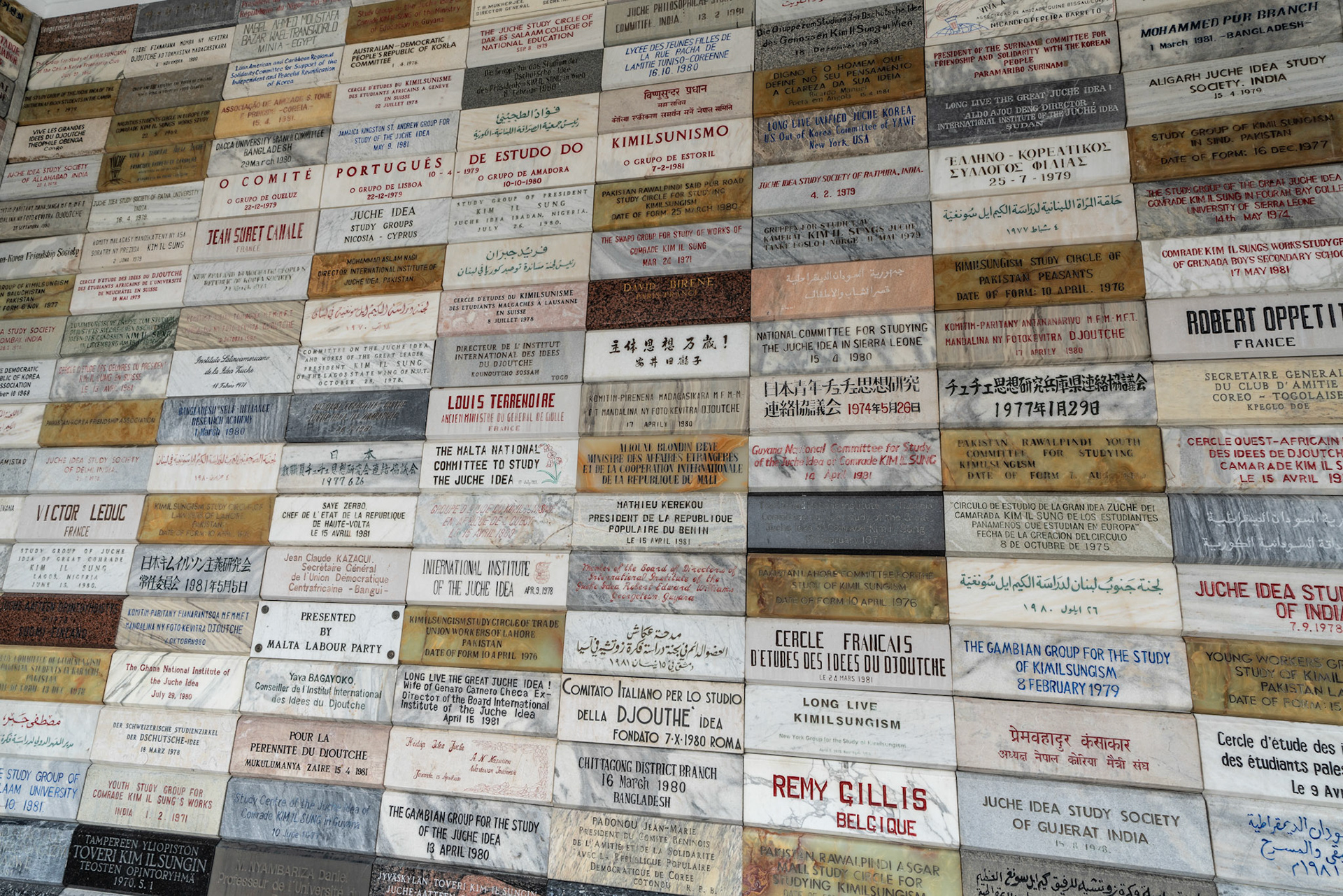

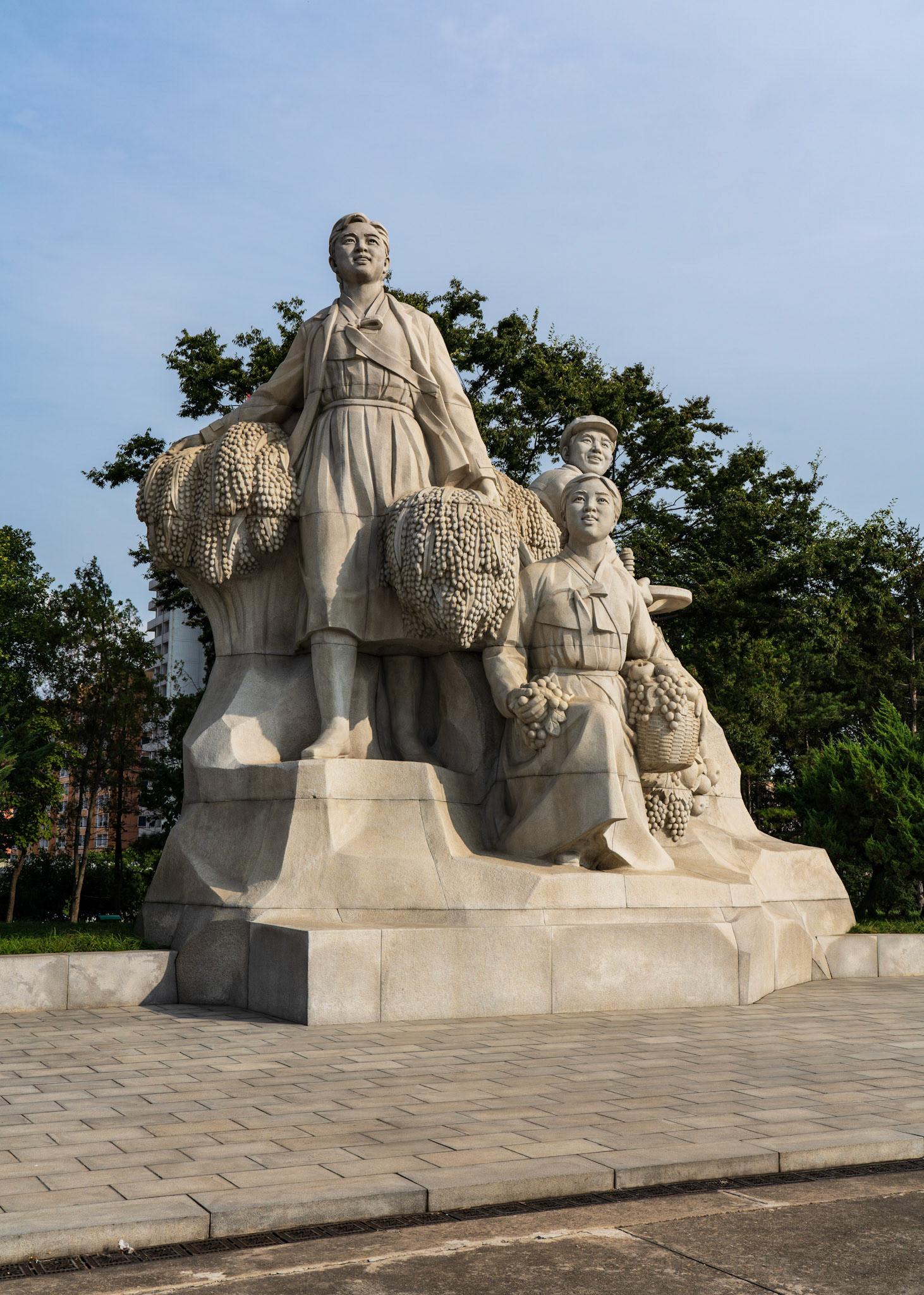
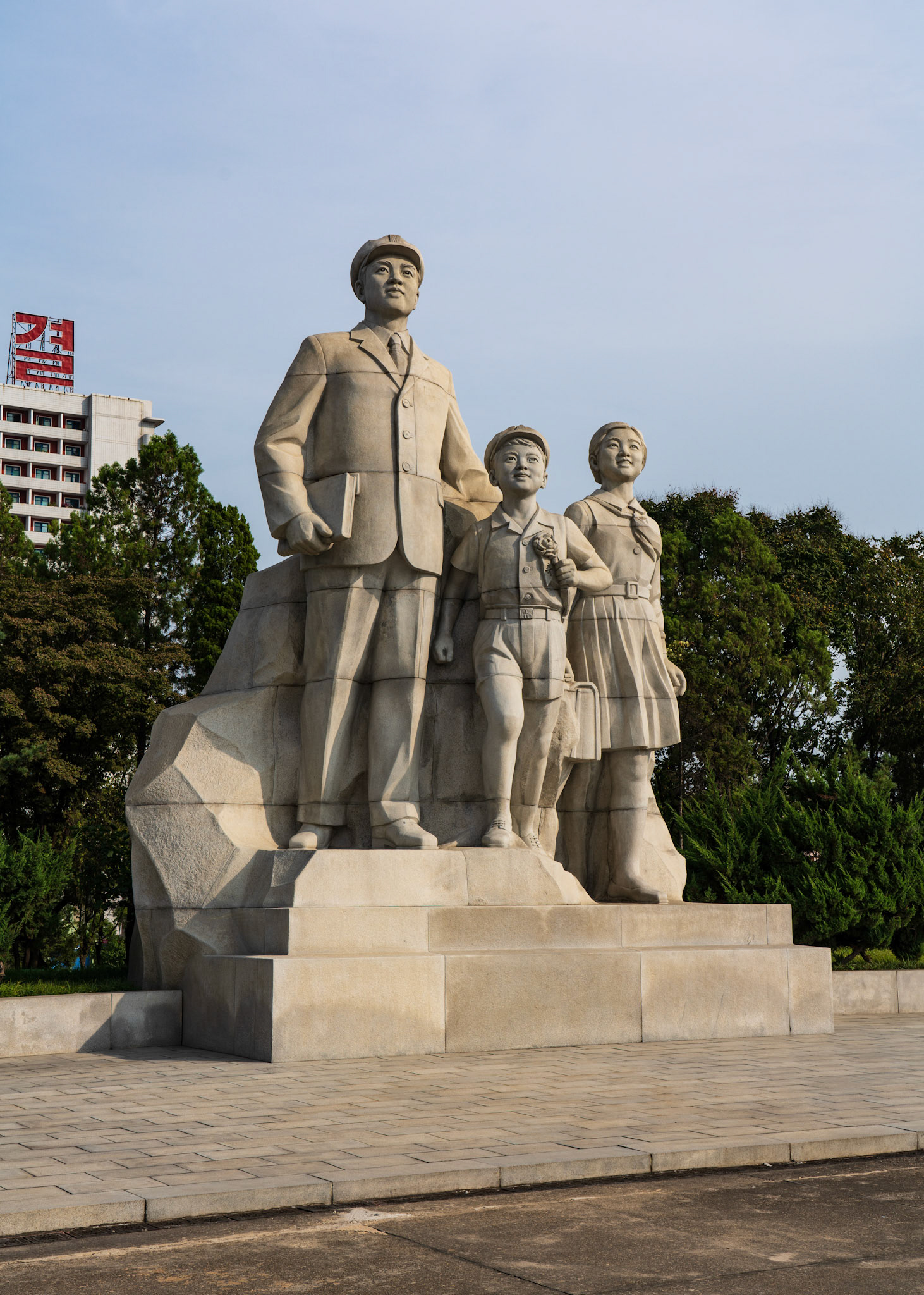


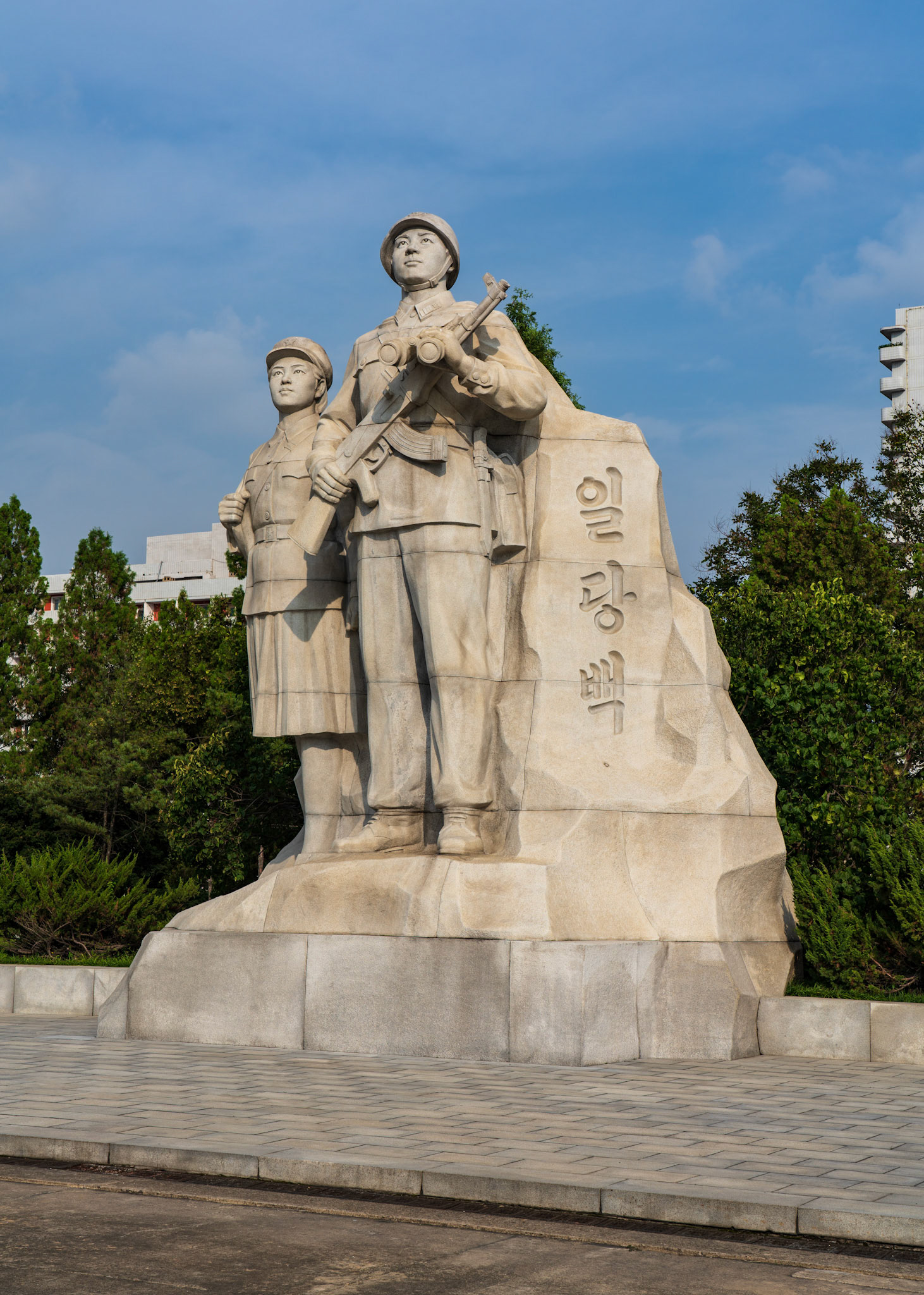

View from Yanggakdo Hotel over Taedong River to Juche Tower at sunrise.
The Ryugyong Hotel
The story behind the tallest unoccupied building in the world.
The construction of the 105-story, 330-meter-tall Ryugyong Hotel started in 1987, was intended to house over 3'000 guest rooms and be completed in time for the 13th World Festival of Youth and Students in June 1989. After several delays construction was halted in 1992 as North Korea entered a period of economic crisis after the fall of the Soviet Union. For over 16 years, the unfinished building sat vacant and without windows, fixtures, or fittings, appearing as a massive concrete shell. In 2008 construction resumed, and the exterior was completed in 2011. Even partial opening was announced for 2013, as of 2018 the building remains unopened and has been called the tallest unoccupied building in the world.
Arch of Triumph
The Arch of Triumph in Pyongyang is the world’s tallest triumphal arch. It is 10 meters taller than the famous Arch in Paris. Inaugurated in 1982 to commemorate the 70th birthday of the Great Leader Kim Il Sung and his great contributions in the resistance during the National Liberation War from 1925 to 1945.
Victorious Fatherland Liberation War Museum
Perhaps the most interesting museum in Pyongyang, this mouthful of an institution opened its current home in 2013 to mark the 60th anniversary of the end of the Korean War. It celebrates Korea's victory over the imperialist American forces. The USS Pueblo is still floating here, captured by the DPRK in 1968 while it was on a reconnaissance mission. A proud trophy as the DPRK was able to force the US to give an official apology, the first of its kind, in order to negotiate the release of the US sailors. The USS Pueblo is worldwide the only US Navy ship in the hands of a foreign power.
Monument to Party Founding
The Monument to the Party Founding is 50 meters high to symbolize the 50-year anniversary of the founding of the Workers' Party of Korea. The belt is made of 216 blocks. The 216 blocks and the 42-meter inner diameter symbolize the date 16 February 1942, the purported date of birth of Kim Jong Il.
조선인민의 모든 승리의 조직자 이며 향도자인 조선로동당 만세
The organizers of the victory of the Korean people and the leader of the Workers Party of Korea!


Kumsusan Palace of the Sun
On the outskirts of Pyongyang stands the Kumsusan Palace of the Sun, once the residence of North Korea’s founder Kim Il Sung. After Kim Il Sung’s death in 1994, it now serves as the final resting place for not only Kim Il Sung himself but also his son and successor Kim Jong Il. Both Great Leaders lie in luxury within climate-controlled tombs and are draped in the Worker’s Party of Korea flag as their blankets.
There is no shortage of regulations if you expect entry into this esteemed revolutionary site. It's requested to bow before each Great Leader three times and all visitors must undergo formalities prior to entry including a shoe clean, a state of the art dust blower to ensure the palace remains in pristine condition and metal detectors. There is absolutely no talking or photography allowed inside the palace. Exploring this mausoleum is certainly a surreal and once-in-a-lifetime experience.
Mangyongdae District
The view from Chongnyon Hotel, opened in 1989. Approximately 4 km west from the city centre it is standing high in the Mangyongdae District of Pyongyang.
This district is also known as the Sports Village as it has over 10 gymnasiums, leisure and sports grounds. Some of these include the Pyongyang Circus, Taek-Won-Do Hall and Mangyongdae School Children's Palace, just to mention a few.


Mirae Scientists Street
With a prime location next to the Taedong River and the Pyongyang Station the Mirae Scientists Street, constructed in 2015, is one of the most highly desired areas in the city to live in.
Many of the scientists and engineers of the DPRK reside here due to their affiliation to Kim Chaek University, the university that leads the DPRK’s nuclear research and ambition.


Ryomyong Residential Area
Ryomyong Street is one of Pyongyang’s newest and most prestigious residential areas. The street was completed two days ahead of schedule, on April 13th of 2017. Kim Jong Un set the deadline for completion on the same date as his grandfather’s birthday, and national holiday, the Day of the Sun (April 15th.) The entire project took less than a year to complete, the 270m high Ryomyong Condominium was built just in 74 days.
"Its construction goes to prove once again that neither sanctions nor pressure can ever check the victorious advance of the army and North Koreans." - Marshal Kim Jong-Un (2017).
"The completion of this street is more powerful than 100 nuclear warheads." - Prime Minister Pak Pong-Ju (2017).
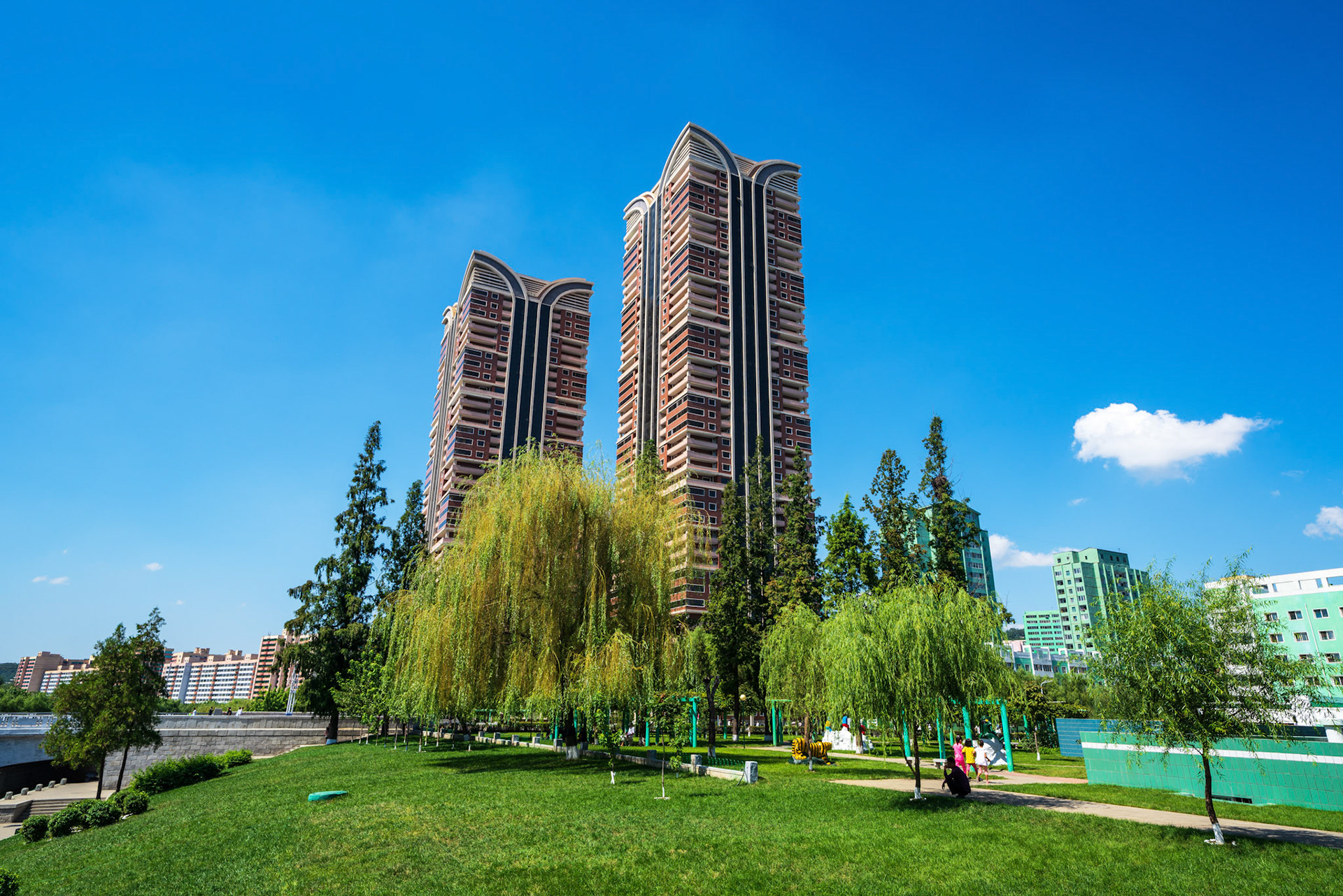

Pyongyang Metro
The Pyongyang Metro isn’t just the deepest metro system on earth, it’s also a nuclear bunker with purpose built blast doors. Each station is uniquely themed. The ‘Golden Soil’ station celebrates agriculture by showcasing murals of wheat harvests and fresh fruit, while the walls of ‘Construction’ station include mosaics of smiling laborers at work as Kim Il-Sung offers field guidance. Transiting here just as 700,000 locals do each day will mean leaving with a stronger understanding of what it means to be North Korean.





Mass Games and Parades: North Koreas 70th Anniversary
To mark its 70th birthday, North Korea held a military parade, put on a massive show with its first mass games artistic and gymnastic titled "The Glorious Country". Tens of thousands of military personnel and performers had been preparing for months for the displays in Kim Il Sung Square and May Day Stadium in Pyongyang.
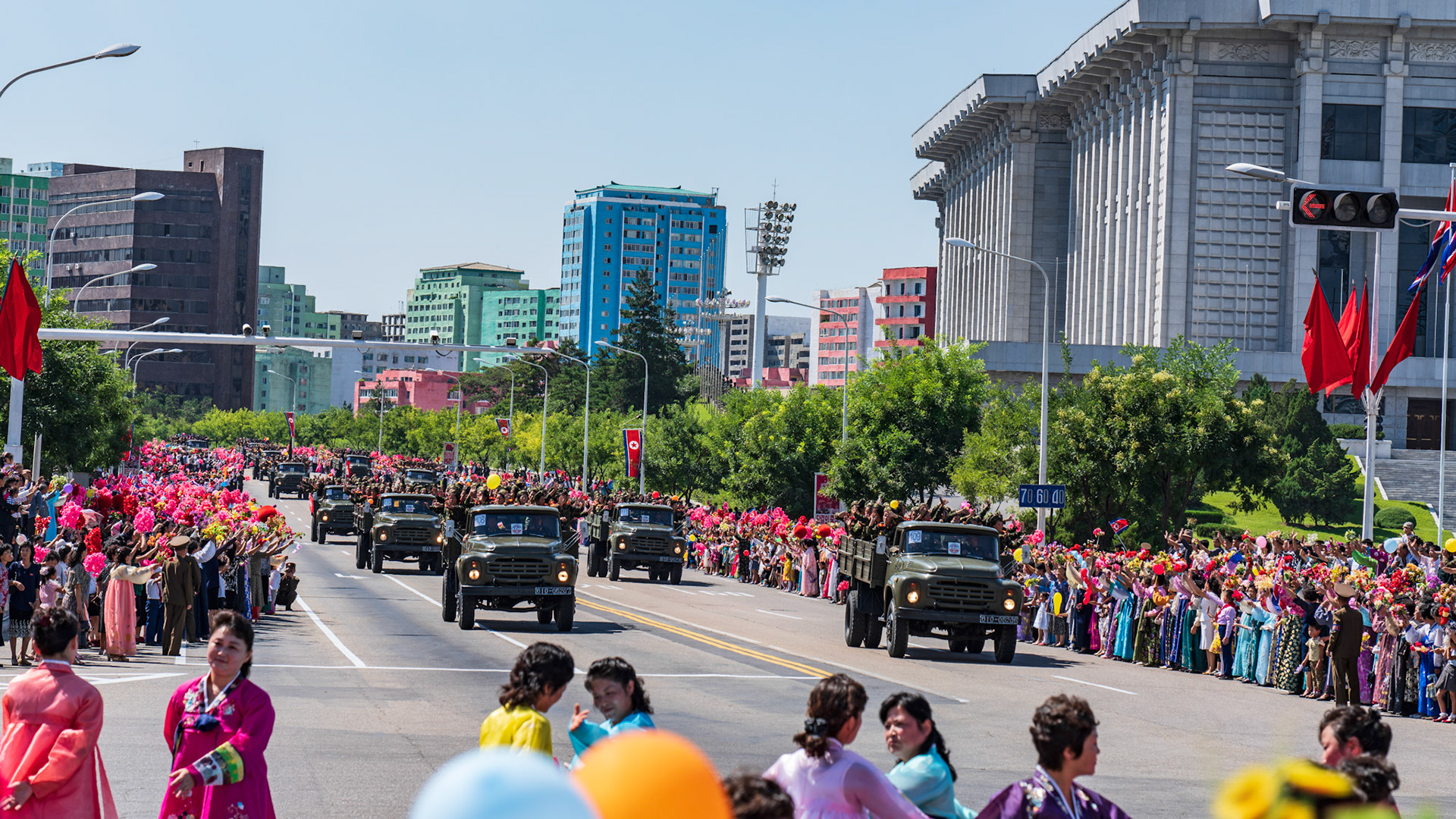

The Glorious Country
After five year absence, the biggest show on earth made an astonishing comeback for the 70th birthday of North Korea. Months in the preparation, the show featured more than 100'000 performers participating in a grandiose, flamboyant blend of artistry and North Korean propaganda under the curved arches of the May Day Stadium. The stadium is believed to be the biggest in the world in terms of capacity. It can seat up to 150'000 people.






Kaesong
Kaesong is located only 8 kilometers north from the Korean Demilitarized Zone (DMZ). This historical city was the capital of Koryo Dynasty from 918 to 1392, one of the strongest kingdoms on the Korean peninsula. The 198 kilometer drive from Pyongyang through empty highways will offer remarkable sites of the North Korean countryside and glimpses of people's daily activities outside of the capital.

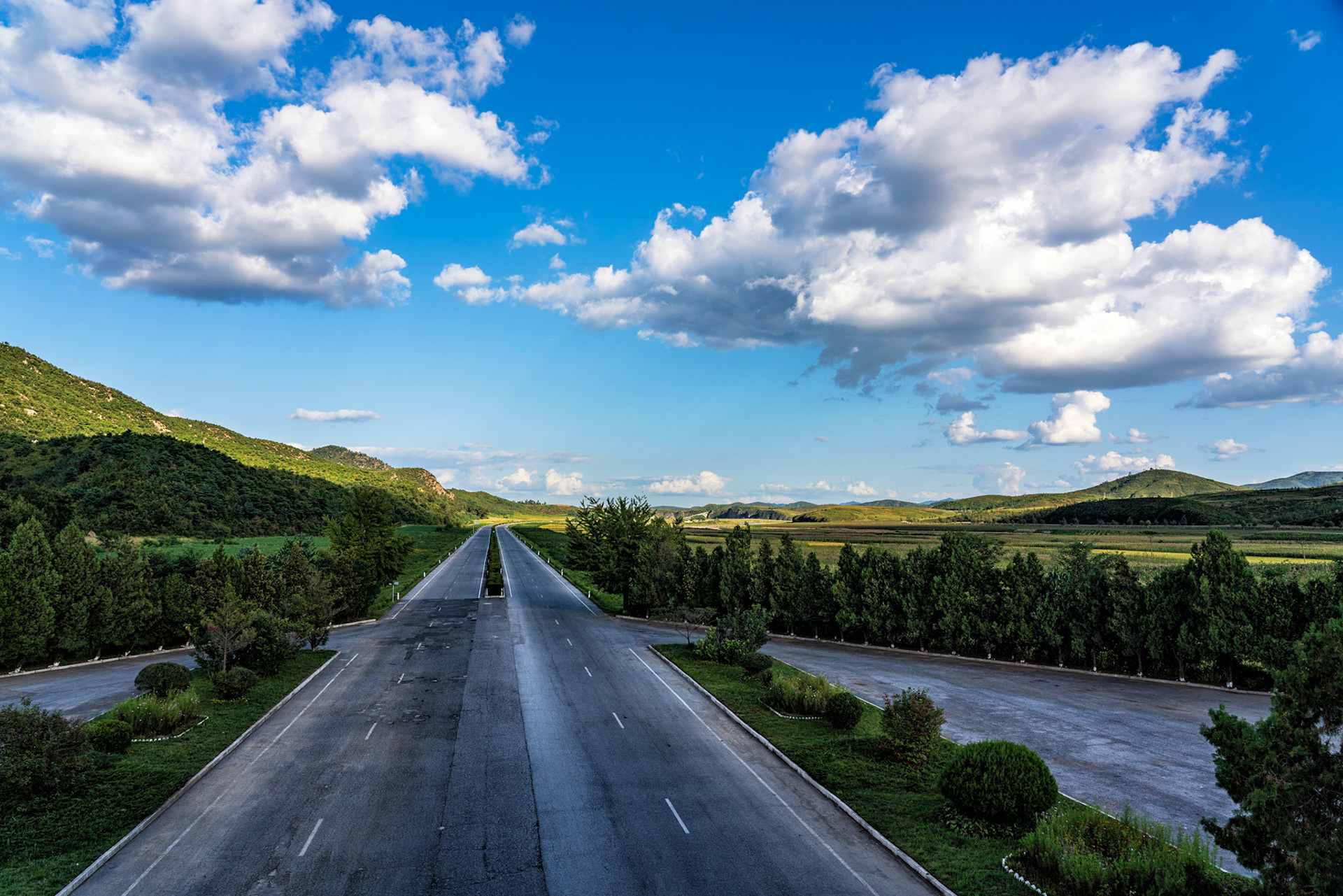
Janam Hill
Spectacular views of the city are offered from here and the entire old part of town can be seen from the hill. Unlike most cities in Korea, Kaesong was not destroyed during the Korean War.
원수님따라 하늘땅 끝까지
Follow Marshal Kim Jong Un up to the end of the earth to reach the sky.
Giant bronze statues of President Kim Il Sung and General Kim Jong Il overlooking the whole city and the surrounding region. If the weather is clear these bronze statues can be seen with binoculars from Dora Observatory, the closest point to the north in South Korea.
Panmunjom
The Korean Demilitarized Zone (DMZ) is a heavily fortified buffer zone that runs along the 38th parallel separating South Korea and North Korea. The demilitarized zone runs across the Korean Peninsula for 250 kilometers. It is about 4 kilometers wide.
The DMZ was created on July 27, 1953 during the Korean Armistice Agreement, which marked the end of the Korean War. This buffer zone is still highly militarized and patrolled on each side to protect against invasions. According to the agreement, troops may patrol the DMZ but may not cross the Military Demarcation Line (MDL), the invisible border between South Korea and North Korea.
An abandoned village known as Panmunjom is now the location of the Joint Security Area (JSA). It is here where South and North Korean soldiers stand face to face. Blue conference rooms are used for talks between both sides. The MDL passes through these buildings and is marked by a solid line of concrete.
Mount Kumgang
Mount Kumgang or Kumgangsan is a 1638 meter-high mountain. With its 12'000 peaks Mount Kumgang is located at the east coast of Korea and not far from the Military Demarcation Line. Composed of thousands of rugged, glittering granite and diorite peaks, cliffs, steep ravines, waterfalls, and ancient Buddhist temples, Kumgangsan is a region of breathtaking beauty that, until 2010, had been off-limits to most foreigners visiting North Korea.


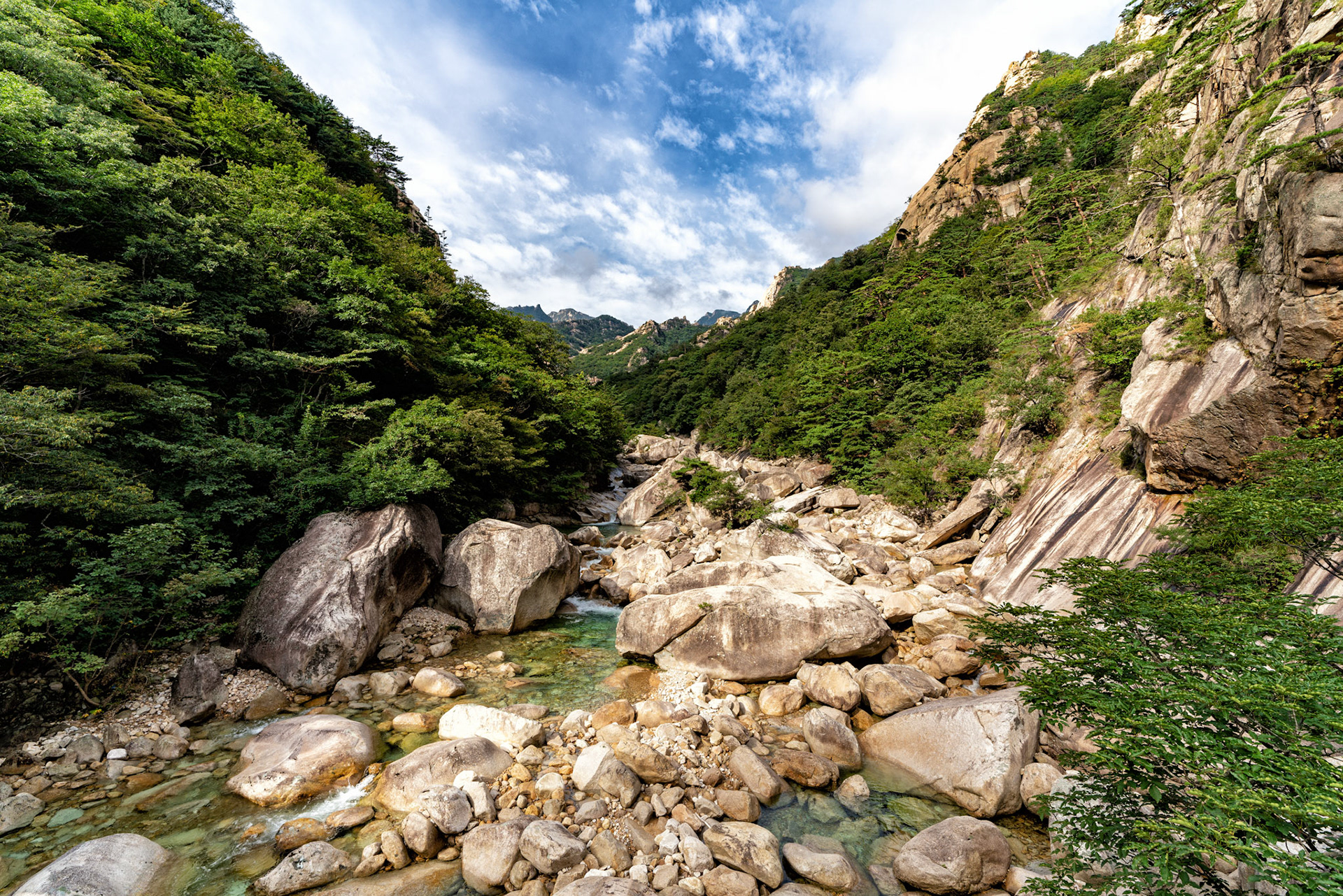



Hamhung
Hamhung is North Korea's second largest city. It is one of the major industrial cities in the country and a port city. From 1955–1962, Hamhung was the object of a large-scale program of reconstruction and development by East Germany including the build-up of various construction-related industries and intense training measures for Korean construction workers, engineers, city planners and architects.


Children walking by the Grand Theatre in Hamhung. It was opened in 1984, containing around 800 rooms and its main hall hosts various cultural performances. It is the largest theatre building in the country.
Pujon
Pujon is a mountainous area about 3-4 hours drive north of Hamhung where service persons of the Korean People's Revolutionary Army built secret bases in the 1930s. The secret camp on Mount Okryon in the Pujon Revolutionary Battle Site is one of them. The main attraction is the 'River of Rocks' - from the top at an elevation of 1550 meter there is a 60 meter wide and 800 meter long impressive 'river' of big rocks. Kim Jong Suk, the wife of Kim Il Sung and mother of Kim Jong Il, stayed here with other guerrillas in 1939. They lived in a small, simple cabin under some rocks.
Pujon is a hardly accessible place with transport available only during dry days as rains turn dusty roads into swamps in this mountain area.





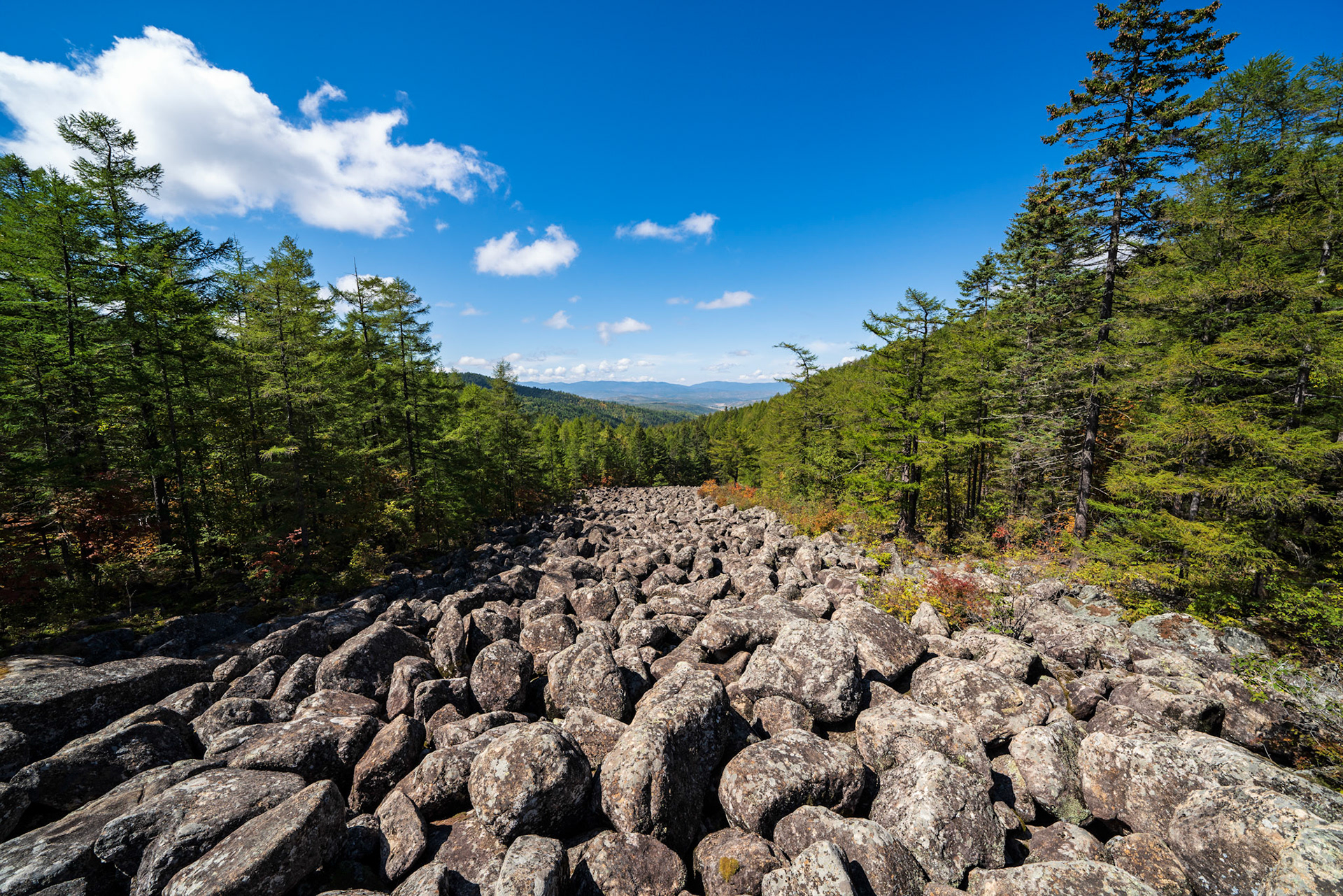
North Hamgyong Province
North Hamgyong province is the northernmost province of North Korea and is bordered by China. Since most of the area was closed to outsiders until very recently, it remains one of the least visited parts of one of the least visited countries in the world. According to information from government officials less than 300 foreigners visit this region every year.
North Hamgyong province is more than 500 kilometers away from Pyongyang. The only way to go there is by charter plane from Pyongyang to Orang Airport. Orang Airport is controlled by the Korean People's Army and normally used by the military, though a small number of commercial passenger flights also allowed to operate there.
Used charter plane was an Antonov An-24RV manufactured in 1974. The airplane operated by Air Koryo with registration number P-532 is currently blacklisted on the Designated Nationals and Blocked Persons list issued by the United States Office of Foreign Assets Control (OFAC's SDN).


Mount Chilbo
Mount Chilbo or Chilbosan in Korean is a mountain area in North Hamgyong province, one of the 5 celebrated mountains of Korea. There are a million stories about the area and the rock formations. In 2000 Mount Chilbo was included into UNESCO World Heritage Tentative List. Chilbosan embrace 700m to 1103m mountains forming a middle-altitudinal landscape. It holds enormous cultural heritage, notably through the Kaesim Temple, built in 826, with its thousand year old history.
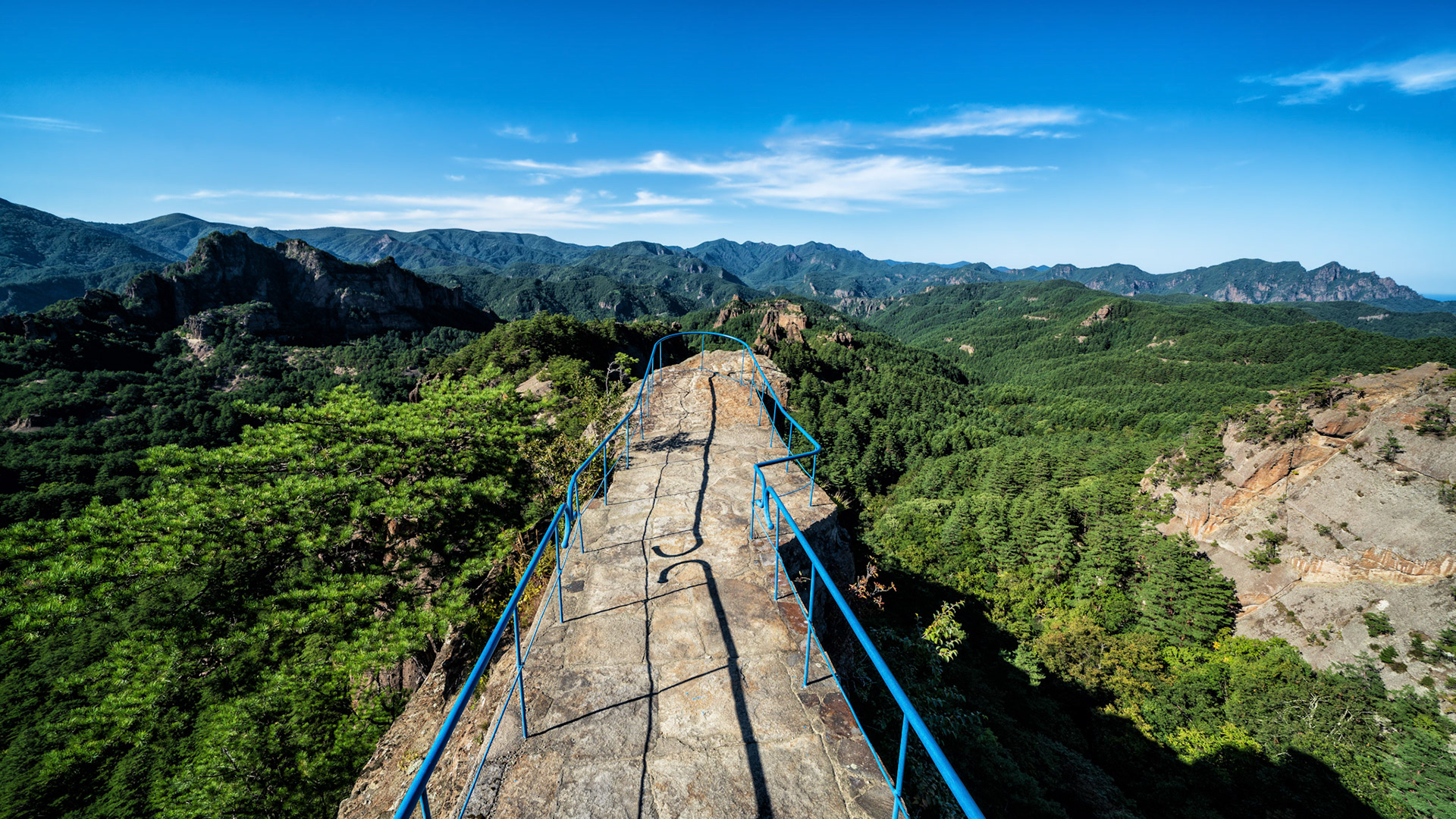

Chongjin
Chongjin is the country's third largest city. It is the DPRK’s second-largest industrial city featuring an array of factories, mills, towering chimneys and spindly black cranes. Chongjin has been nicknamed "The City of Iron" for its six million tonne-capacity Kim Chaek No 1 Iron and Steel Complex.
Hoeryong
Hoeryong is located directly opposite Jilin Province, China, with the Tumen River in between. Hoeryong is the birthplace of Kim Jong Suk, Kim Il Sung's first wife and Kim Jong Il's mother.
The town itself is quite small. Two streets, each a couple of kilometers long, running alongside the shallow Hoeryong stream. There is no public transportation inside the city – and, frankly, it is not necessary. One can walk the entire (nameless) main street within 20 minutes. Even it's a small town, Hoeryong’s education system includes a number of schools from kindergarten to college. In the education system of North Korea, music, theatre and performance has for decades played a key role as a way for the state to package and transmit party policy and ideology, and present it to the students in an accessible, consumable form.





